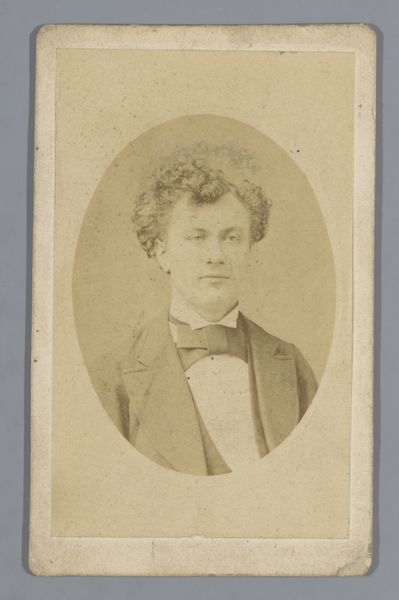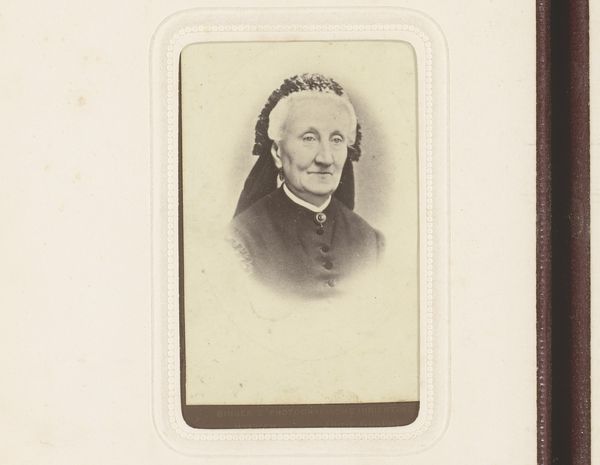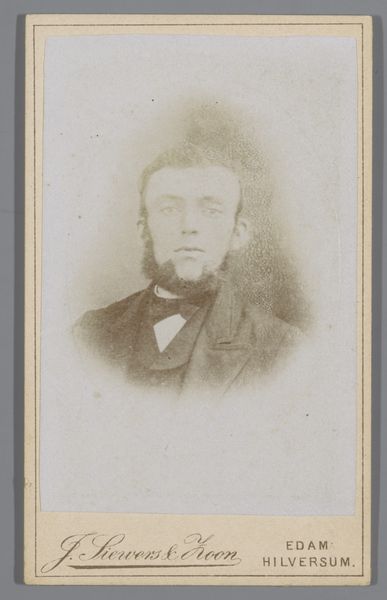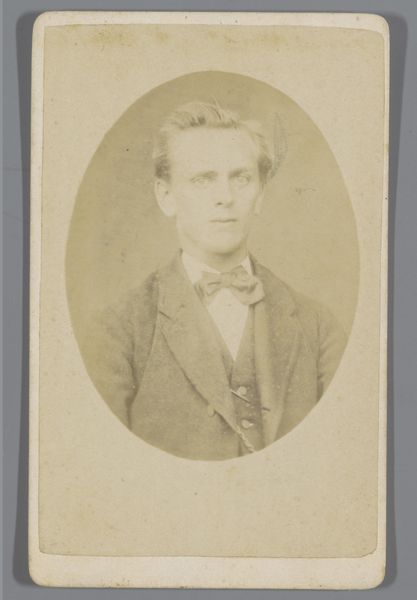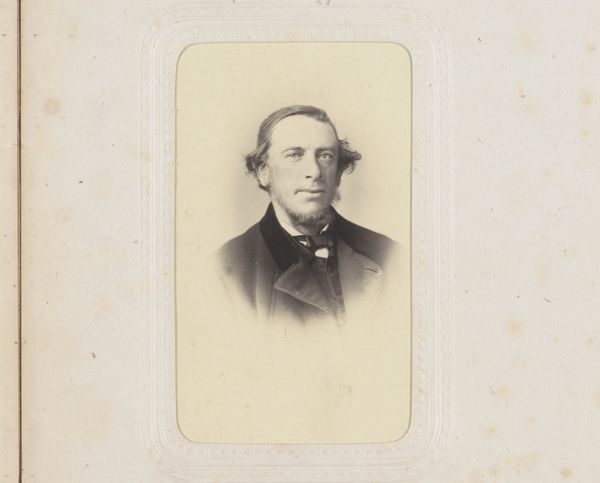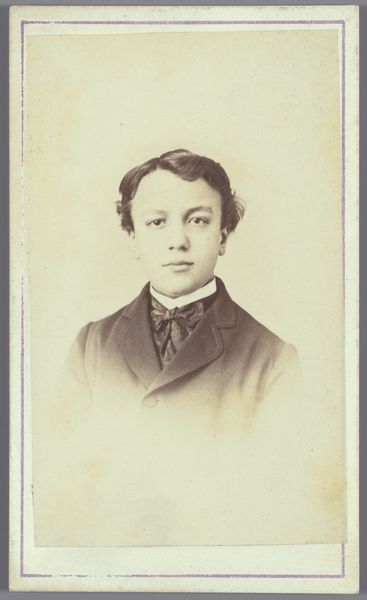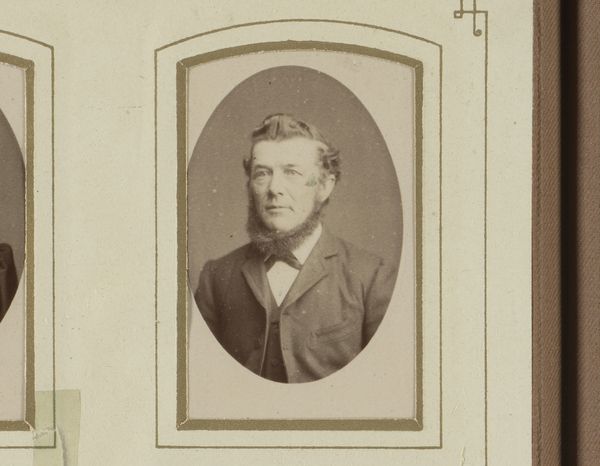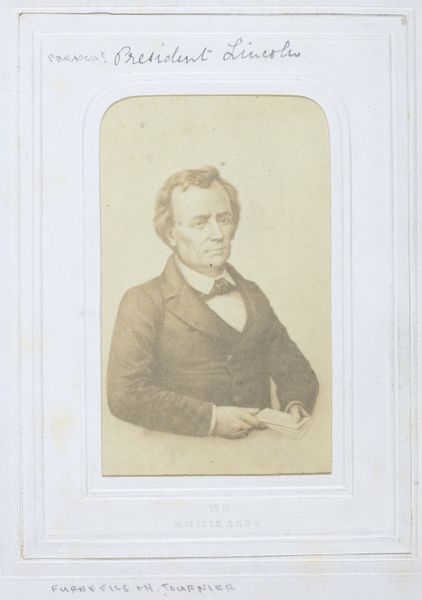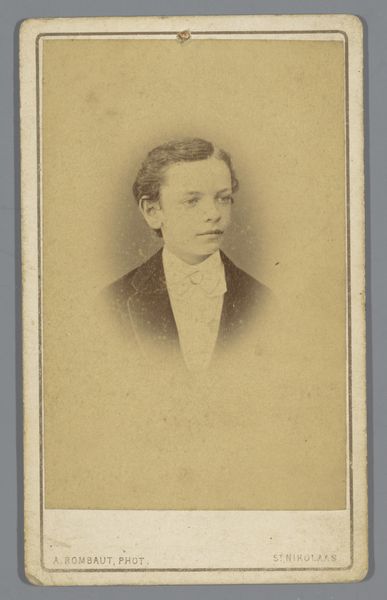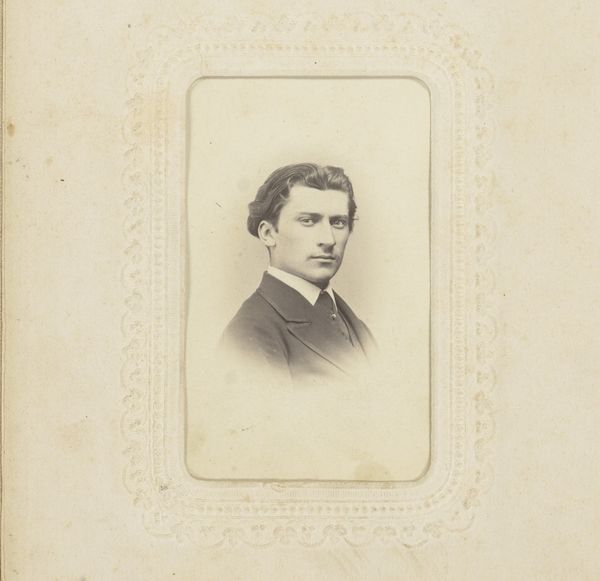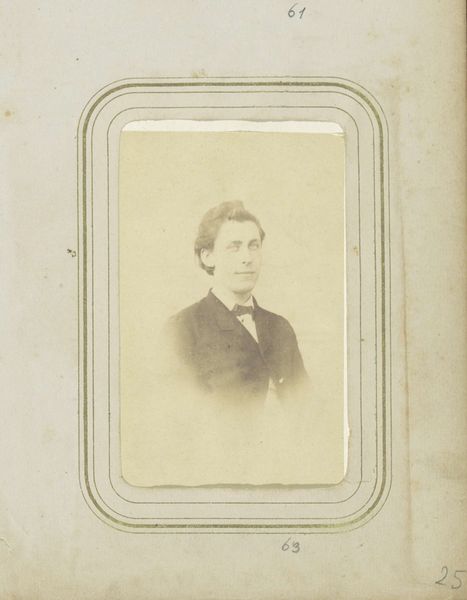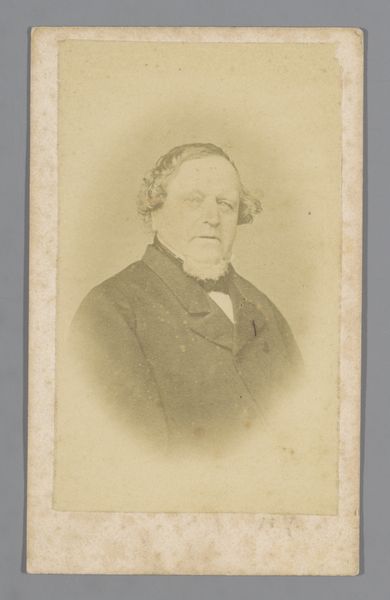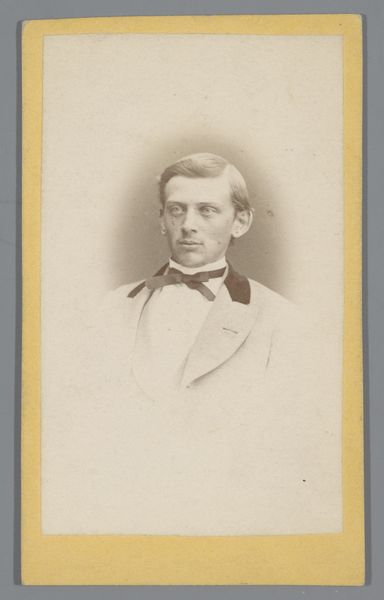
photography, gelatin-silver-print
#
portrait
#
photography
#
gelatin-silver-print
#
realism
Dimensions: height 105 mm, width 64 mm
Copyright: Rijks Museum: Open Domain
Editor: Here we have an intriguing piece: a gelatin-silver print, a photographic portrait from around 1878-1880, attributed to Alphonse H.E. Scheffermeyer, called "Portret van een onbekende man." I'm struck by the sitter's very direct gaze, almost confrontational. It makes me wonder about the power dynamics inherent in portraiture. How do you interpret this work, given its historical context? Curator: The formal realism of this portrait situates it within a larger cultural trend of the late 19th century: the rise of photography as a tool for documenting and classifying individuals. This wasn't just about capturing likeness; it was about defining social roles. Who had the means to commission or sit for a portrait? And how does the technology used impact representation? Editor: That's a good point. Photography, especially then, was somewhat exclusive. Do you think the ‘unknown’ status of the sitter adds another layer to this political element? Curator: Absolutely. The anonymity raises questions about access, representation, and who gets remembered. This image participates in a much larger history of visual culture; mass media would explode in the early 20th century with consequences for politics and advertising. This portrait is part of that progression. Editor: It is almost like this photograph is a ghost from a bygone era, one in transition between fine art painting and the future of popular media. I learned a great deal; it's more than just an old photo. Curator: Indeed. Analyzing the 'unknown' aspects—who is missing from our histories—is critical for an understanding of visual culture.
Comments
No comments
Be the first to comment and join the conversation on the ultimate creative platform.
